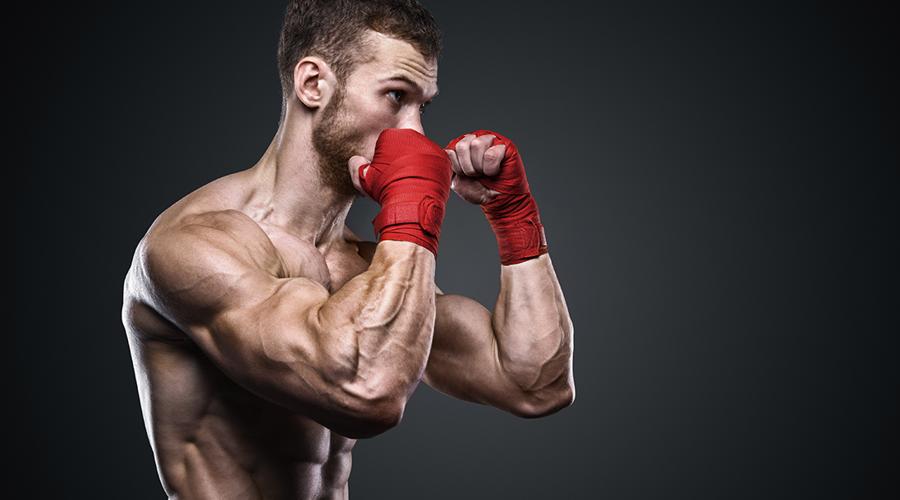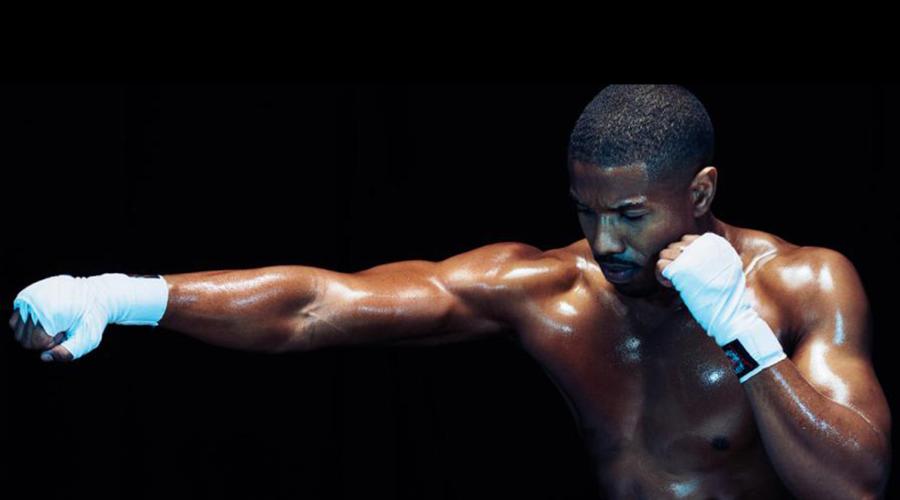
Are you ready to unleash your inner athlete and achieve a boxer physique that commands respect and admiration? Whether you’re an aspiring boxer or simply looking to enhance your physical fitness, this blog post is here to guide you on your journey. In the world of boxing, the physique of an athlete is a testament to their dedication, discipline, and hard work. It represents a harmonious balance of strength, speed, and agility—a symphony of athleticism that captures both power and finesse. But how exactly can you attain such a remarkable physique?
In this post, we will delve into the secrets of building a fighting physique, providing you with proven tips and techniques that will transform your body and take your athletic performance to new heights. From strength training to nutrition, we will cover all the essential elements required to sculpt your body into a formidable force. So, get ready to step into the ring of knowledge and unlock the potential within you. Are you prepared to embrace the challenge?
Achieve the boxer physique you’ve always wanted – Click here!
Understanding the Boxer Physique
To truly unleash your inner athlete and build a fighting physique, it’s crucial to understand what sets this athletic body type apart. A fighting physique is characterized by a harmonious blend of strength, speed, and agility—a combination that enables boxers to excel in the ring. Strength forms the foundation of a boxer’s physique, allowing them to deliver powerful punches and withstand opponents’ blows. Speed is another key element, enabling boxers to swiftly evade attacks and seize opportunities for counterattacks. Additionally, agility plays a vital role, facilitating quick movements, footwork, and seamless transitions. The boxer physique is not solely about raw power; it’s a finely tuned machine that combines athleticism, endurance, and strategic thinking.
To achieve a fighting physique, it’s important to focus on developing these fundamental aspects through targeted training, proper nutrition, and mental conditioning. In the following sections, we will explore specific exercises, dietary considerations, and mental techniques that will help you unlock the full potential of your inner athlete and attain the coveted boxer physique you desire. Get ready to embark on a transformative journey that will not only enhance your physical capabilities but also empower you with the mindset of a champion.
Read more about Creatine Monohydrate

Boxer Physique Comparisons – Training vs. Genetics
When discussing boxer physiques, it’s important to consider the interplay between training and genetics. The following table highlights some key aspects of the boxer physique, comparing the training-induced changes and the genetic factors at play.
| ASPECT | TRAINING-INDUCED CHANGES | GENETIC FACTORS |
|---|---|---|
| Muscle Definition | Can enhance muscle tone and definition | Plays a role in baseline muscle mass and structure |
| Strength | Can increase through targeted exercises | Varies based on individual genetics |
| Cardiovascular | Improved endurance and cardiovascular fitness | Baseline capacity determined by genetic factors |
| Body Composition | Reduced body fat and increased muscle mass | Genetic predisposition to certain body types |
| Agility | Enhanced footwork and quickness | Genetic influence on coordination and reflexes |
| Bone Density | Can improve with weight-bearing exercises | Genetic factors influence baseline bone density |
| Hand-Eye Coordination | Can be developed through training and practice | Genetic factors influence baseline coordination |
| Flexibility | Can increase through stretching and exercises | Genetic factors determine baseline flexibility |
Building Strength for a Boxer Physique
In the world of boxing, strength is the backbone of an athlete’s performance. It provides the necessary power to deliver devastating punches, withstand opponents’ blows, and maintain control in the ring. To achieve a formidable fighting physique, incorporating strength training into your fitness routine is crucial. This section will delve into the importance of strength training for boxers and provide recommendations for exercises that target both the upper and lower body. By focusing on these exercises, you will develop the muscular foundation necessary to enhance your boxing skills and reach peak performance levels.
Importance of strength training for boxers
Strength training is an essential component of boxing training as it directly translates to improved punching power and overall performance in the ring. Engaging in regular strength training sessions helps boxers develop the necessary muscular strength and endurance to effectively execute punches, grapple with opponents, and maintain optimal positioning during bouts. By strengthening the muscles, tendons, and ligaments, boxers reduce the risk of injuries and enhance their ability to absorb and withstand impact. Additionally, a well-rounded strength training program can improve balance, stability, and coordination, essential factors in delivering powerful and accurate punches while maintaining defensive maneuvers.
Recommended exercises for developing upper body strength
The upper body plays a significant role in boxing, as it is responsible for generating the force behind punches and defending against incoming strikes. To develop upper body strength, incorporating exercises such as the bench press, pull-ups, and shoulder press is highly beneficial. The bench press targets the chest, shoulders, and triceps, helping to enhance pushing power. Pull-ups primarily work the back, biceps, and shoulders, improving pulling strength and endurance. The shoulder press targets the deltoids, trapezius, and triceps, contributing to better shoulder stability and punching strength. By including these exercises in your training routine, you can effectively strengthen the upper body muscles required for boxing prowess.

Recommended exercises for developing lower body strength
Strong lower body muscles are essential for generating power in boxing, facilitating quick footwork, and maintaining balance during movements. Exercises such as squats, deadlifts, and lunges are excellent for developing lower body strength. Squats engage the quadriceps, hamstrings, glutes, and calves, promoting overall leg strength and stability. Deadlifts target the glutes, hamstrings, and lower back, improving explosive power and posterior chain strength. Lunges work the quadriceps, hamstrings, glutes, and calves, enhancing balance and single-leg strength. By incorporating these exercises into your training regimen, you can build a solid foundation of lower body strength, enabling you to generate forceful punches, swift movements, and efficient footwork in the boxing ring.
Get started on your journey to a stronger, leaner body – Learn more!
Enhancing Speed and Agility for Boxing
In the dynamic and fast-paced world of boxing, speed and agility are key factors that can make a significant difference in the ring. The ability to move quickly, react swiftly, and change directions seamlessly can give you a decisive edge over your opponents. This section will explore the importance of speed and agility in boxing, as well as provide recommendations for plyometric exercises and agility drills that will enhance your explosiveness, reflexes, and overall performance. By incorporating these exercises into your training routine, you will sharpen your speed and agility, allowing you to strike with precision, evade attacks effectively, and maintain superior footwork in the boxing ring.
The significance of speed and agility in the ring
Speed and agility are crucial components of a boxer’s skill set. In the ring, quick movements and reflexes enable boxers to dodge incoming punches, swiftly counterattack, and maintain defensive positions. Speed allows boxers to close the distance between themselves and their opponents rapidly, providing more opportunities for successful strikes. Agility plays a vital role in executing evasive maneuvers, enabling boxers to quickly change directions, pivot, and effectively navigate around the ring. By enhancing speed and agility, boxers can outmaneuver their opponents, maintain control of the fight, and capitalize on opportunities for victory.
Plyometric exercises for improving speed and explosiveness
Plyometric exercises are excellent for developing speed, explosiveness, and power, making them valuable additions to a boxer’s training regimen. These exercises involve quick and explosive movements that stretch and contract muscles rapidly, helping to improve the efficiency of muscle fibers and enhance overall athletic performance. Examples of effective plyometric exercises for boxers include box jumps, ladder drills, and medicine ball throws. Box jumps target lower body explosiveness and jumping power. Ladder drills focus on footwork, agility, and coordination. Medicine ball throws improve upper body explosiveness and rotational power. By incorporating these plyometric exercises into your training routine, you can enhance your speed, explosiveness, and power, translating to improved boxing performance in the ring.
Agility drills for quick movements and reflexes
Agility drills are specifically designed to enhance quick movements, reflexes, and change of direction abilities—essential attributes for boxing success. These drills help boxers develop the necessary footwork, coordination, and reaction time to effectively evade attacks and maintain optimal positioning. Some recommended agility drills for boxers include cone drills, shuttle runs, and agility ladder drills. Cone drills focus on quick directional changes, acceleration, and deceleration. Shuttle runs improve speed, agility, and cardiovascular endurance. Agility ladder drills enhance footwork, coordination, and agility. By incorporating these agility drills into your training routine, you can sharpen your quick movements, reflexes, and overall agility, giving you a competitive advantage inside the boxing ring.
Ready to train like a champion? Click here to start building your boxer’s body.
Read more about best supplements for powerlifting
Boxer Physique Comparisons – Training Techniques
Boxers utilize various training techniques to enhance their physique and improve their performance. The following table outlines some of the common training techniques employed by boxers and their associated benefits.
| TECHNIQUE | DESCRIPTION | BENEFITS |
|---|---|---|
| Strength Training | Involves resistance exercises to build muscle and increase strength | Enhanced punching power and overall physical strength |
| Cardiovascular Exercise | Focuses on activities that elevate heart rate and improve endurance | Improved stamina and recovery during matches |
| High-Intensity Interval Training (HIIT) | Alternates between intense bursts of activity and short rest periods | Enhances cardiovascular fitness and burns fat |
| Plyometric Training | Utilizes explosive movements to develop power and fast-twitch muscles | Improved speed, agility, and explosive strength |
| Core Strengthening | Targets the muscles in the abdomen, lower back, and hips | Enhances stability, balance, and overall body control |
| Circuit Training | Combines different exercises performed in quick succession | Increases overall fitness and muscular endurance |
| Boxing-Specific Drills | Involves boxing techniques like punching, footwork, and defensive moves | Develops boxing skills and specific muscle groups |
| Flexibility Training | Includes stretching exercises to improve joint range of motion | Reduces the risk of injuries and enhances mobility |
Nutrition and Diet for Optimal Performance
Nutrition plays a critical role in maximizing athletic performance, and boxing is no exception. Proper fueling and nourishment are essential to support the intense physical demands of training and competing in the ring. This section will delve into the significance of nutrition for boxers, emphasizing the importance of macronutrients, hydration, and meal timing. By understanding the role of nutrition and adopting a strategic approach to your diet, you can optimize your performance, enhance recovery, and maintain energy levels throughout your training sessions and fights.

Essential Macronutrients for Boxers
Boxers require a well-balanced diet that provides the necessary macronutrients—carbohydrates, proteins, and fats—to meet their energy needs and support muscle growth and repair. This section will explore the role of each macronutrient in boxing nutrition and provide guidelines for their optimal consumption. Carbohydrates are the primary energy source, providing fuel for intense training sessions and fights. Proteins are essential for muscle development, repair, and recovery. They aid in building lean muscle mass and support overall strength and power. Fats play a crucial role in hormone production, joint health, and providing long-lasting energy. By understanding the importance of macronutrients and incorporating them in appropriate proportions, you can fuel your body for peak performance.
Recommended Foods for Boxers
A well-planned diet for boxers should consist of nutrient-dense foods that provide a wide range of vitamins, minerals, and antioxidants. This section will outline recommended food choices that are particularly beneficial for boxers. Emphasizing lean protein sources such as chicken, turkey, fish, and plant-based options like tofu or lentils can help meet the protein needs for muscle recovery and growth. Incorporating complex carbohydrates like whole grains, fruits, and vegetables provides sustained energy and supports glycogen replenishment. Healthy fats from sources like avocados, nuts, and olive oil provide essential nutrients and aid in hormone regulation. Additionally, staying properly hydrated is crucial for optimal performance. Adequate water intake and electrolyte balance should be maintained before, during, and after training sessions and fights.
Meal Timing and Pre/Post-Training Nutrition
Meal timing is a vital aspect of boxing nutrition to ensure optimal energy levels and efficient recovery. This section will discuss the importance of pre and post-training nutrition and provide guidelines for meal timing. Pre-workout meals should focus on providing a mix of carbohydrates and protein to fuel the training session adequately. Post-workout nutrition should emphasize protein for muscle repair and carbohydrates to replenish glycogen stores. It’s important to consume a balanced meal or snack within the appropriate timeframe after training to optimize recovery. Additionally, spacing out meals and snacks throughout the day and ensuring consistent nutrient intake is crucial for maintaining steady energy levels and supporting training adaptations.
Conclusion and Tips for Success
In conclusion, achieving a boxer physique and maximizing your performance in the ring requires a holistic approach that encompasses training, nutrition, and mental conditioning. By consistently incorporating strength training exercises for both the upper and lower body, you can develop the muscular foundation necessary for power and endurance. Enhancing speed and agility through plyometric exercises and agility drills will allow you to move with precision and react swiftly in the ring.
Additionally, adopting a balanced diet that focuses on essential macronutrients and proper meal timing will provide the necessary fuel and nutrients for optimal performance. Remember to prioritize rest and recovery, seek professional guidance when needed, and maintain a positive mindset throughout your boxing journey. With dedication, discipline, and the implementation of these proven tips, you can unleash your inner athlete, achieve a fighting physique, and excel in the exciting world of boxing. So, lace up your gloves, embrace the challenge, and let your hard work and determination pave the way to success in the ring.